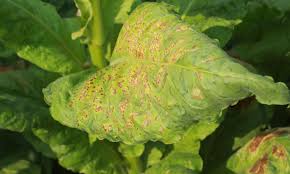
For the past century, plant virology and the American Phytopathological Society have a deeply intertwined history. As the Society emerged as a distinct entity in the first decade of the 20th century, viruses were also making their mark as newly described and discovered agents of disease. Interestingly, Tobacco mosaic virus (TMV) and its economic hosts in the Solanaceae, such as tobacco and tomato, also find their origins in the Americas.
What follows is a brief review of the origins of our understanding of “the nature of the virus,” deciphering the basis of host-pathogen interaction, and vignettes of the early TMV workers who developed many of the tools and techniques that have become part of the definition of what it is “to be” a virologist or “to do” virology. As plant molecular virology has its origins in the early 20th century, first from the early descriptive work of viruses diseases (1900-1935), followed by the biochemical, the genetics, and biophysical work (1935-1960), the molecular biology (1960-1980), and our current era of transgenic technology, functional genetics of plant viruses, and using viruses as molecular tools, it is useful to develop a contextual understanding of how we came to work with TMV.
Like other plant pathogenic viruses, TMV has a very wide host range and has different effects depending on the host being infected. Tobacco mosaic virus has been known to cause a production loss for flue cured tobacco of up to two percent in North Carolina. It is known to infect members of nine plant families, and at least 125 individual species, including tobacco, tomato, pepper (all members of the useful Solanaceae), cucumbers, a number of ornamental flowers, and beans including Phaseolus vulgaris and Vigna unguiculata. There are many different strains. The first symptom of this virus disease is a light green coloration between the veins of young leaves. This is followed quickly by the development of a “mosaic” or mottled pattern of light and dark green areas in the leaves. Rugosity may also be seen where the infected plant leaves display small localized random wrinkles. These symptoms develop quickly and are more pronounced on younger leaves. Its infection does not result in plant death, but if infection occurs early in the season, plants are stunted. Lower leaves are subjected to “mosaic burn” especially during periods of hot and dry weather. In these cases, large dead areas develop in the leaves. This constitutes one of the most destructive phases of Tobacco mosaic virus infection. Infected leaves may be crinkled, puckered, or elongated. However, if TMV infects crops like grape and apple, it is almost symptomless.
Picture Credit : Google




